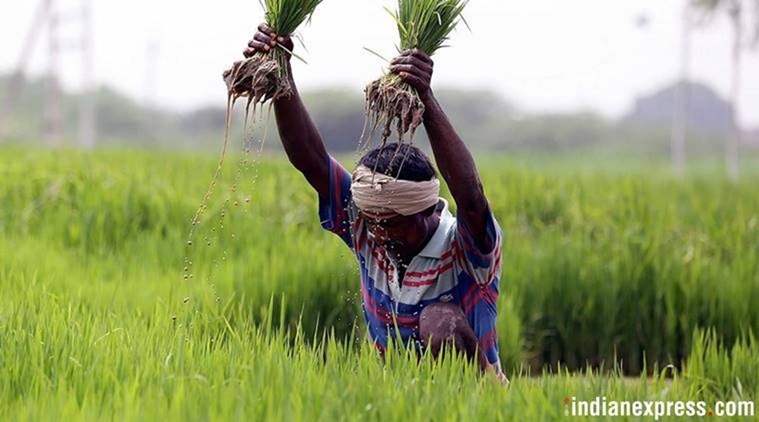 The government scheme ‘Mera pani-meri virasat’ has attracted many farmers of Sirsa block, which is one of eight paddy-rich blocks in Haryana, where the groundwater level has dipped below 40 metres.
The government scheme ‘Mera pani-meri virasat’ has attracted many farmers of Sirsa block, which is one of eight paddy-rich blocks in Haryana, where the groundwater level has dipped below 40 metres.
FARMERS WHO have opted for crop diversification in place of paddy in Haryana’s Sirsa district say they have chosen the scheme to conserve water for future generations even though they may face financial loss with the shifting of crops in their fields.
The government scheme ‘Mera pani-meri virasat’ has attracted many farmers of Sirsa block, which is one of eight paddy-rich blocks in Haryana, where the groundwater level has dipped below 40 metres. Of 9,182 farmers who have diversified to other crops in place of paddy in these eight blocks, 3,809 farmers belong to Sirsa block.
The Manohar Lal Khattar led BJP-JJP government offers an incentive of Rs 7,000 per acre to farmers who shift to alternative crops from paddy, apart from assuring them for procurement of their new crops. According to Haryana government figures, as many as 85,992 farmers have applied to opt for alternative crops in place of paddy across 89,118 hectares in the state till now. Among the alternative crops, cotton is the farmers’ first preference, followed by bajra, horticulture, maize and pulses in the state.
In Sirsa block, farmers with tubewells would prefer paddy, but this was leading to depletion of groundwater levels. “In the cotton belt of Sirsa, we had moved to paddy keeping in view its high productivity. But the government has offered an amazing scheme at a time when the groundwater is depleting fast. So, I have decided to move to cotton, bajra, moong and jowar from paddy in my all 10 acres,” says Raja Ram, a farmer from Shahpur Begu village.
The 60-year-old farmer said that the land will turn barren if they continue to sow paddy in large chunks of land in the state. “I will cultivate cotton in a major portion of my land because with this I will be able to cultivate one more crop (moong) in the same area. In this way, I will try to earn as much I used to earn from paddy.”
However, another farmer, Krishan Lal, believes his earnings may come down after crop diversification. Out of his four acres, Lal will cultivate cotton in two acres and moong in one acre in place of paddy. “We are ready to face losses to save water for future generations. Although, I must say that this will affect many farmers financially. The profit from cotton or any other crop isn’t the same as the profit was from paddy, and these crops may not even be successful in the blocks with hard soil. As of now, I have not received any funding from the government,” said Lal.
Sources say the first installment of the financial incentive is released after verification of the farmers’ claims for crop diversification.
A young farmer, Nishant Punia, a Master’s degree holder in civil engineering, has decided to move to cotton in his all seven acres of land. “In terms of finances, there is a huge gap between the earnings of paddy and cotton. I used to earn almost Rs 80,000 per acre which will reduce to Rs 50,000 per acre now,” said Punia, a resident of Mandana village of Sirsa district.
He further said, “During monsoon season, accumulation of water in low areas of hard land will create problems in crops other than paddy. Though, I am lucky because my land lies on higher ground.”
A law graduate, Manoj Kumar, whose family has 40 acres of land, suggests simplifing the procedure to get benefits under the ‘mera pani-meri virasat’ scheme. According to Kumar, he will move to cotton from paddy in one third of his total land holding.
“There is a gap in the earnings of paddy and other crops at the rate of around 20,000 per acre. The financial incentive offered by the government and the lower cost of cultivation of cotton may help in bridging this gap,” he adds.
“If groundwater depletion continues at its current pace, the situation will be scary after 15-20 years. The government scheme appears to be an attempt to make people aware about the current scenario. With this scheme, water would be optimised wisely, and the environment will also be preserved.”